17+ Desert Horror Movies: Thirst, Isolation, and Psychos
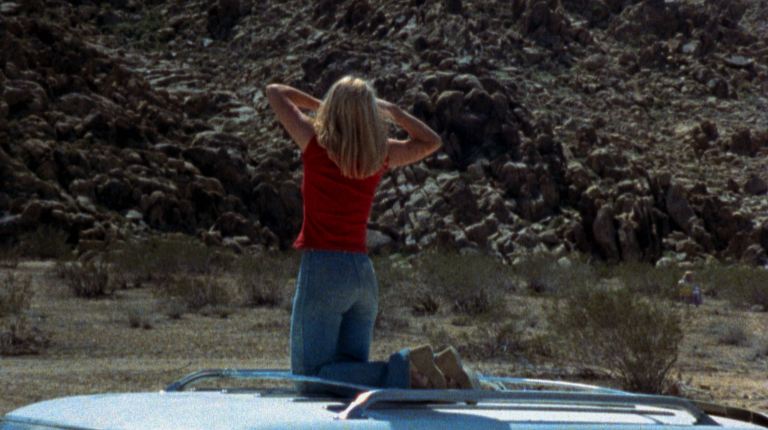
Nearly three-quarters of the Earth’s surface is covered by water—and the uncharted vastness of the ocean has led to its own horror genre.
Table of Contents
Although only 29% of the planet consists of habitable land, nearly a third of that land mass consists of deserts that are largely uninhabited, uncharted, and that present the complete opposite problem as the ocean—there’s too little water rather than too much. And whereas the sun usually provides life, in the desert it can kill you. And if the heat or thirst don’t bring about your demise, there are plenty of poisonous snakes and insects ready and willing to do the job. And that doesn’t account for the kind of violent, antisocial drifter weirdos who wind up in the desert plotting evil. It’s no coincidence that the Manson Family planned to seek shelter in Death Valley after igniting a global apocalypse.
The desert’s isolation is similar to that of outer space—if you suddenly wind up hungry, thirsty, or terrorized by beasts you’ve never seen before, don’t count on any human beings to hear you scream and rush to your help.
Here are some classics in an unjustly ignored horror genre.
Best Desert Horror Movies
Them! (1954)
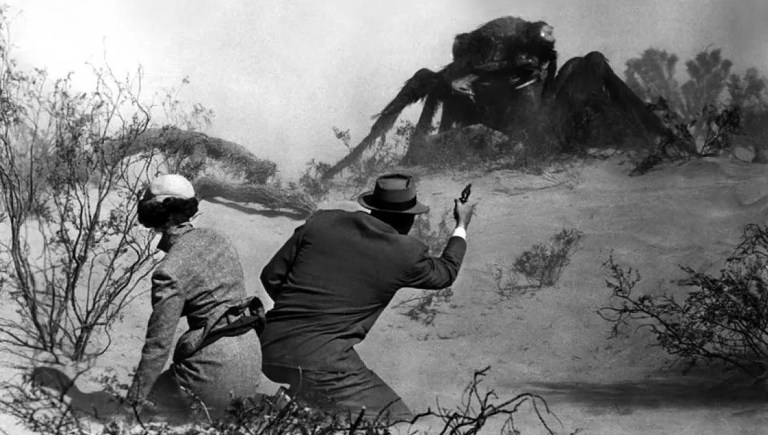
Giant mutated ants roam through the New Mexico desert in Them! The ants eventually make their way to the city (Los Angeles to be exact), but many of the most memorable scenes occur in the open desert and in desert caves as humans use machine guns, bazookas, and flamethrowers to battle the giant insects. Them! is incredibly fun, and it is also one of the most influential sci-fi monster movies of the 1950s.
Faster, Pussycat! Kill! Kill! (1965)

Exploitation director Russ Meyer’s films usually featured strong, dominant women with impossibly large breasts who used and abused everything that got in their way—especially men. This brooding and almost suffocatingly tense black-and-white features three strippers—Varla (Tura Satana), Rosie (Haji), and Billie (Lori Williams)—who decide to leave their jobs in an unspecified city (Los Angeles? Las Vegas?) and go on a joyously sadistic rampage of kidnapping and murder in the wilds of the California desert. Director John Waters called it “beyond a doubt, the best movie ever made. It is possibly better than any film that will be made in the future.”
Duel (1971)
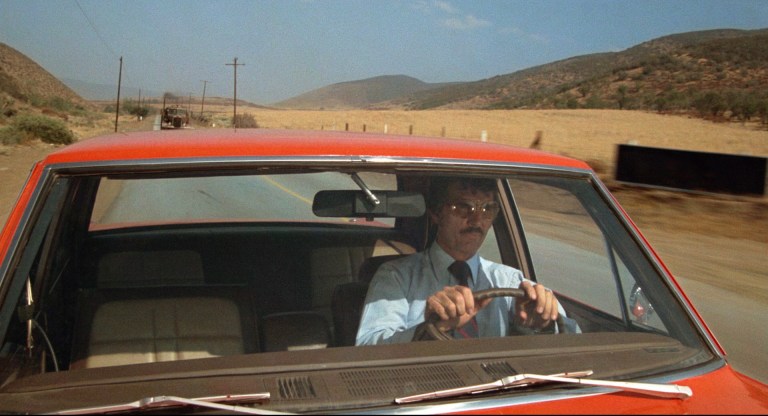
Steven Spielberg’s white-knuckled full-length directorial debut is an incredibly gripping tale of man—to be specific, his name is David Mann (Dennis Weaver)—versus machine (a rusty old semi truck) in the midst of the Mojave Desert. Imagine The Hitcher, but with Rutger Hauer replaced by a truck that keeps stalking the victim no matter how hard he tries to flee from it. Or imagine Jaws, but with a giant truck instead of a shark. Of course, it’s not “only” a truck—one briefly glimpses the driver’s boots or arm or even a flash of his face—but it’s the anonymity of the driver and the fact that it’s never revealed why he decided to torment David Mann that makes Duel such a terrifying metaphor of man’s helplessness in the face of technology.
The Hills Have Eyes (1977)
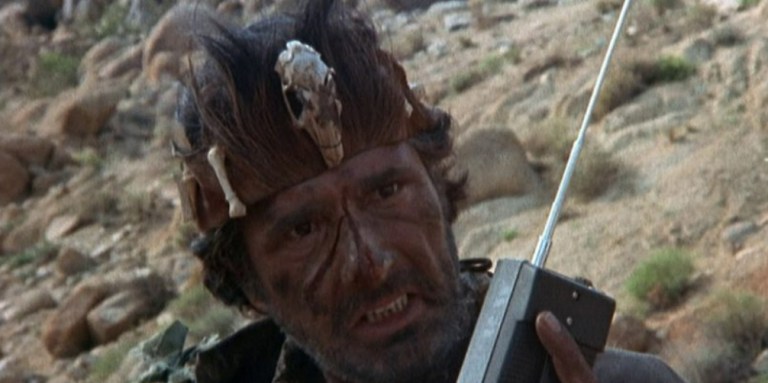
Wes Craven‘s The Hills Have Eyes is one of the more brutal movies to take place in the desert. A family’s car breaks down in the Nevada desert while on their way to Los Angeles. Far away from civilization, the family is stalked and then attacked by a family of cannibals living in the desert. One of Craven’s best films, The Hills Have Eyes is an exploitation movie filled with horrific moments, but it also makes a strong point about human nature and their inclination towards violence. It also features two horror icons, Michael Berryman and Dee Wallace, in roles very early in their careers.
Oasis of the Zombies (1982)
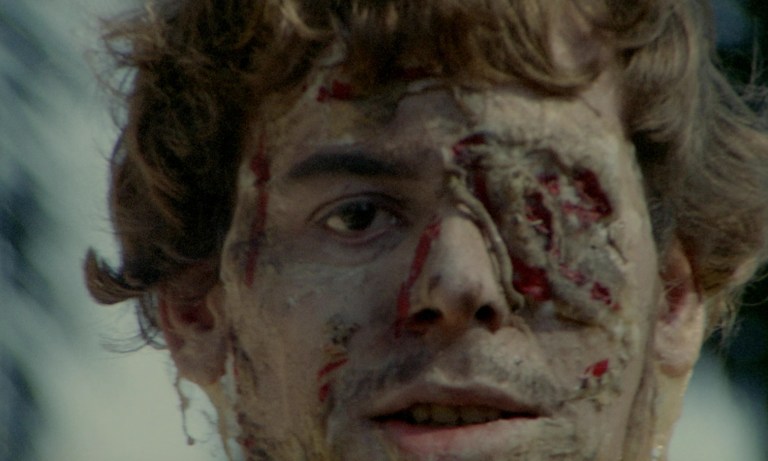
Objectively, Oasis of the Zombies is a terrible movie. It’s about a hunt to find Nazi treasure buried in an African desert. The treasure is guarded by zombies near an oasis, and lots of people die. It’s sleazy, trashy, and haphazardly made, and that’s why it’s such a blast to watch. It’s the perfect movie to view on an old VHS tape in the middle of the night.
The Hitcher (1986)
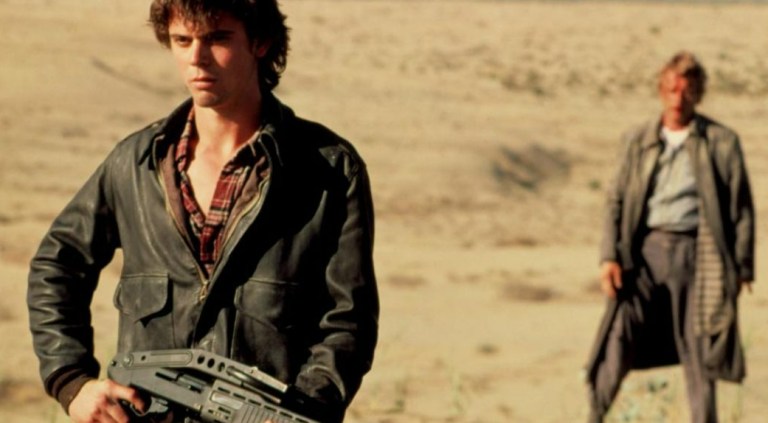
In The Hitcher, Rutger Hauer stars as a murderous hitchhiker playing a deadly game with a driver played by C. Thomas Howell. Jim (Howell) picks up Ryder (Hauer) while driving through a desert in Texas. Ryder announces his intention to kill Jim and dares Jim to stop him, but that’s only the beginning of their time together. Jim is hopelessly drawn in to Ryder’s bloody rampage throughout this tension-filled gem of a horror movie. Jennifer Jason Leigh and Jeffrey DeMunn also star.
Rubber (2010)

Somewhere in the desert, a discarded car tire gains sentience. The tire, named Robert, rolls around, eventually discovering that it has the telekinetic ability to make living things explode. That’s Rubber. The movie doesn’t make much sense, but that’s okay. It’s a fun movie with an offbeat villain that, somewhat surprisingly, begins to develop complex emotions. You’re probably not going to shed a tear for a car tire, but you might at least begin to understand how it feels on its journey. Or maybe not. It’s very strange.
Cargo (2017)
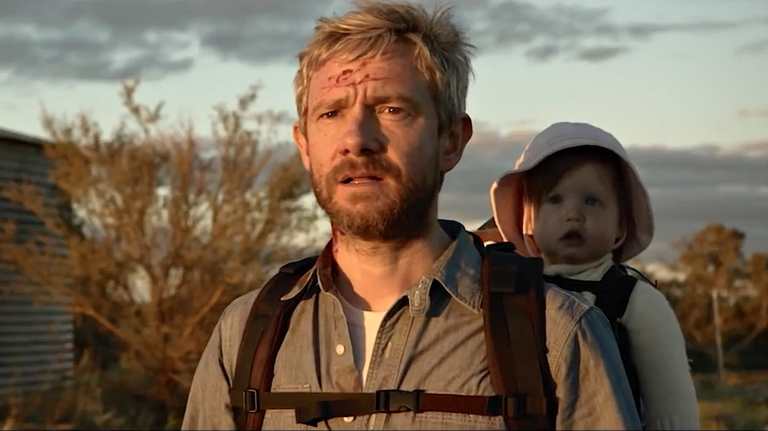
The Australian outback is a massively sprawling chunk of arid, super-heated red dust that is sparsely populated and full of the planet’s most poisonous insects and reptiles. Cargo is set in Australia shortly after a zombie pandemic spreads across the mostly deserted continent. A family who lives on a houseboat seek to evade all human contact, because the disease is spread when an infected person bites them. They eventually team up with a roving group of aboriginals—who’ve navigated Australia’s scorching-hot deserts for 40,000—in their desperate quest to find safety amid turmoil. Alas, though, they find safety from a pandemic as elusive as did the revelers in Edgar Allan Poe’s The Masque of the Red Death.
More Desert Movies
- Psycho (1960) … Although the desert doesn’t play a prominent part in the film, Marion Crane (Janet Leigh) makes her final and fatal stop at the Bates Motel in the fictional town of Fairvale, CA, which is in the Movaje Desert somewhere north of Bakersfield on Route 99.
- Beast of Yucca Flats (1961) In this almost incomprehensible mess of a film—if you like “so bad, it’s good” movies, this is one of the worst/best—Tor Johnson wanders aimlessly, his mouth agape, after surviving a nuclear-bomb blast in the Nevada desert.
- Motorpsycho (1965) in a companion piece to Faster, Pussycat!, Russ Meyer cast three men on motorcycles who go on a sadistic spree in the desert. Motorpsycho is thought to be the first film to feature a Vietnam veteran with PTSD.
- Razorback (1984) a wild razorback boar stalks and kills citizens in the remote Australian outback.
- Tremors (1990) the tiny desert town of Perfection, NV is terrorized by gigantic subterranean worms who suddenly decide to cause a ruckus.
- Dust Devil (1992) the title refers to a Native American legend of a malicious spirit who roams the desert in search of prey.
- Twentynine Palms (2003) is about a couple visiting Joshua Tree National Park. It’s a unique movie that has elements of horror and arthouse. The film is considered part of the New French Extremity.
- Wolf Creek (2005) a trio of backpackers is kidnapped amid the harrowing isolation of the Australian outback.
- Dark Mountain (2013) is a “found footage” fiction movie about three documentarians who mysteriously got lost in the Arizona desert. Their video camera is found, though—and the footage contains clues about what happened to them.
- Revenge (2017) three married CEOs who are playing a hunting game in a desert canyon didn’t realize that one of their mistresses would be so adept at using a gun.
